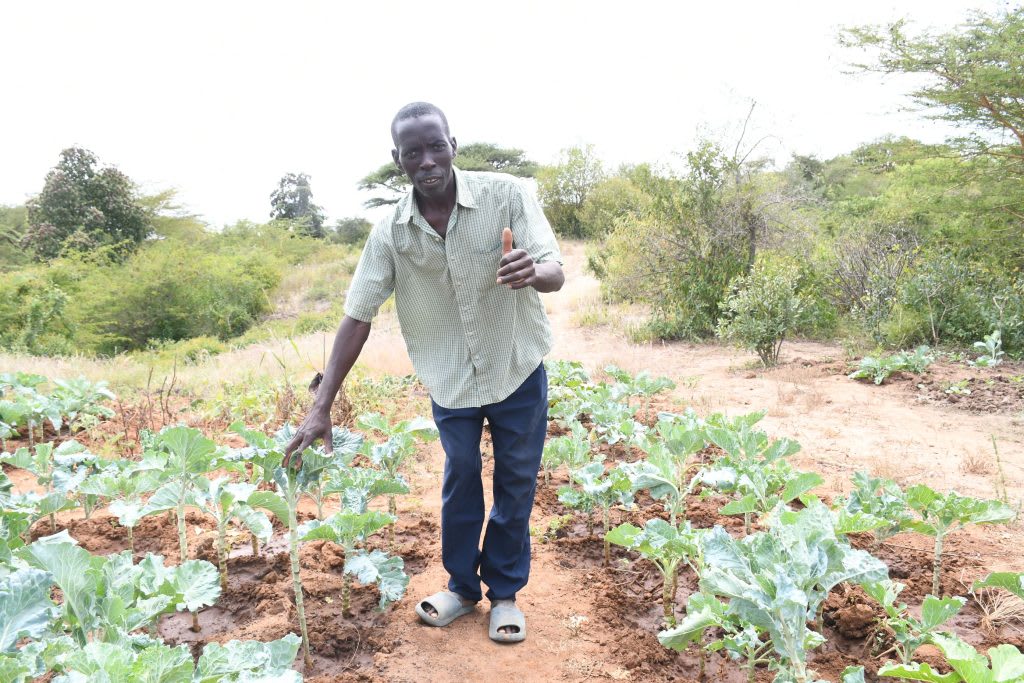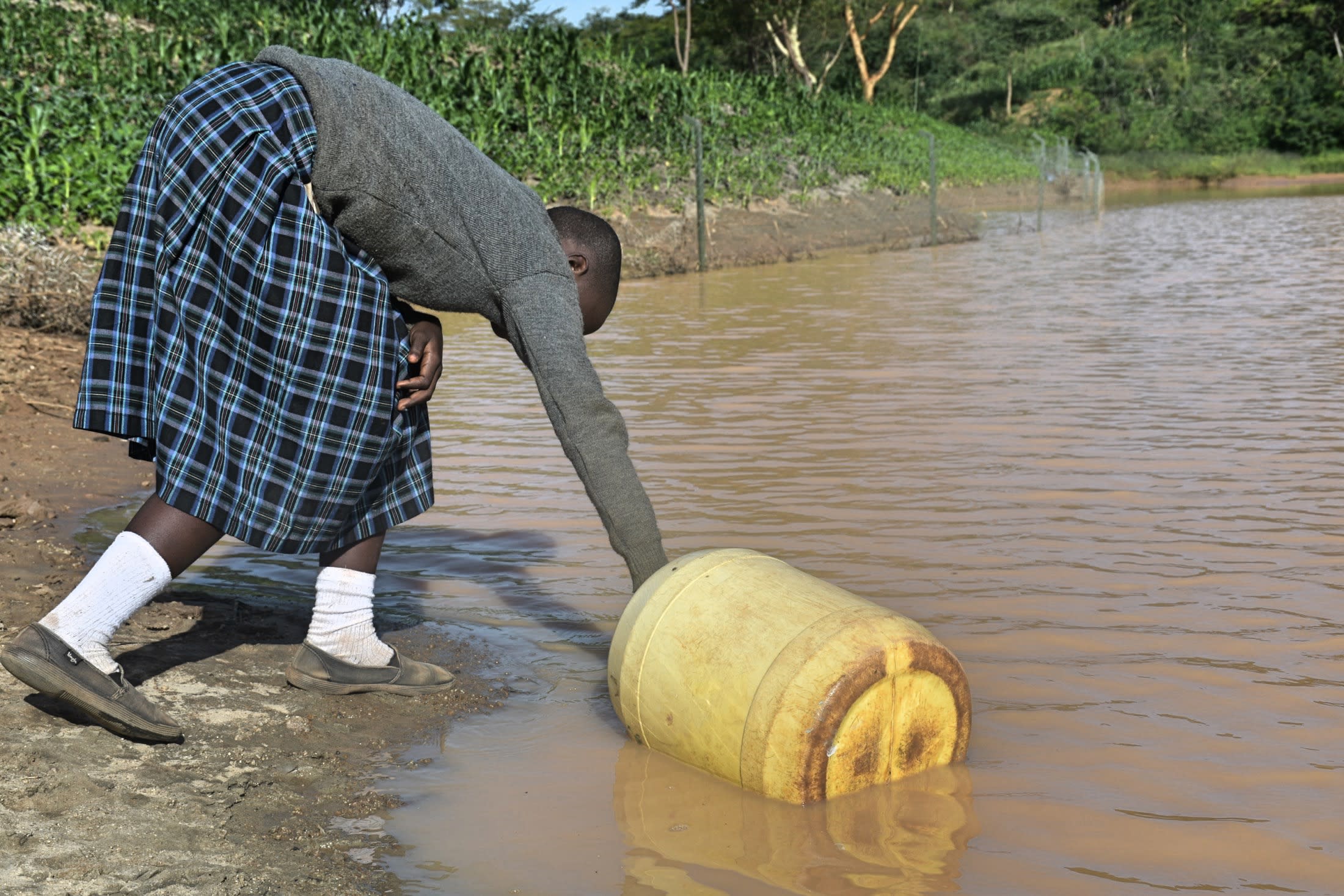The 600 community members who live in Mivau spend most of their days collecting surface water from a faraway earthen dam they rely on to meet their daily needs. It is a task that consumes their time and energy, leaving very little for other tasks in their lives.
Mivau is located in a semi-arid rural area of Southeast Kenya characterized by indigenous trees and drought-resistant crops, but also short periods of rain, ongoing drought, and persistent water crises.
"Women have to wake up as early as 5:00 [in the morning] to fetch water and return home in the afternoon. This consumes most of their time and energy; thus, [they] cannot fully participate in household chores, hygiene, herding livestock, or preparing their lands," shared field officer Alex Koech.
"On average, residents spend more than half a day fetching water. Mivau residents have to use donkeys as their mode of transport, and those that do not have one have to borrow from their neighbors or carry water on their backs. The residents can only make one or two trips to the water point and return home in the afternoon to embark on other activities like herding their goats and cows."

"Water is life, and without it, life is very, very unbearable in our village. In my old age, I still have to fetch water from the distant water source. This has led to problems with my knee, which now aches every time I go to fetch water," shared 63-year-old farmer Makaa Mutisya.

"I also feel sad when I see my children and grandchildren drink the contaminated water because they get sick and have to abscond their classes. Getting them treatment is expensive, and I often rely on traditional herbs. The setup of a nearby water project would eradicate my knee problems, and I would feel happy drinking clean water with my children," said Makaa.
"The little available water means it has to be used sparingly and for basic activities like cooking and drinking. This has adversely affected hygiene and sanitation, crop cultivation, and livestock rearing, ultimately leading to poor income and food insecurity," said Alex.
Women are not the only ones consuming all of their time collecting water. Children also must do the exhausting work of collecting water, leaving them little time to focus on school or enjoying being children.
"The school-going children spend most of their free time [on] evenings, weekends, and academic holidays fetching water; thus, their studies and social life are negatively impacted," Alex said.

"Although I know and I have seen cows, goats, and donkeys excrete on this water point, this is the only available water for drinking. I often develop stomach upsets or diarrhea several times during the year. Since school reopened this month, I have had to stay home twice because I had a stomach ache. My mother prepared a salt and water mixture, which I took with some herbal medicine. Missing classes dims my hopes of having a better career in [the] future, but the set up of a protected water project will ensure I achieve my dream of being a pilot because I will always be present for my classes," said 13-year-old Tabitha M.

Without access to enough safe water, the community members of Mivau will remain stuck in a constant battle to collect enough water while balancing the essential everyday things they need to get done, and dreams of a better life will remain unfulfilled.
Installing a nearby dug-well will allow residents to collect sufficient water to meet their needs. Then, they will have more time to focus on farming, tending to their families, rearing livestock, and improving their personal and environmental hygiene. And children will be able to attend school regularly, creating a more hopeful future.
Helping to solve the water crisis in this community will take a multi-faceted system. It requires the collaboration of the hand-dug well and a sand dam. They will work together to create a sustainable water source that will serve this community for years to come.
Note: Our proposed water point can only serve 300 people per day. We hope to continue working with this community to identify other water solutions that will ensure all of the people in this community have access to safe and reliable drinking water.
The Proposed Solution, Determined Together...
At The Water Project, everyone has a part in conversations and solutions. We operate in transparency, believing it benefits everyone. We expect reliability from one another as well as our water solutions. Everyone involved makes this possible through hard work and dedication.
In a joint discovery process, community members determine their most advantageous water solution alongside our technical experts. Read more specifics about this solution on the What We're Building tab of this project page. Then, community members lend their support by collecting needed construction materials (sometimes for months ahead of time!), providing labor alongside our artisans, sheltering and feeding the builders, and supplying additional resources.
Water Access for Everyone
This water project is one piece in a large puzzle. In Kenya, Sierra Leone, and Uganda, we're working toward complete coverage of reliable, maintained water sources that guarantee public access now and in the future within a 30-minute round trip for each community, household, school, and health center. One day, we hope to report that this has been achieved!
Training on Health, Hygiene & More
With the community's input, we've identified topics where training will increase positive health outcomes at personal, household, and community levels. We'll coordinate with them to find the best training date. Some examples of what we train communities on are:
- Improved hygiene, health, and sanitation habits
- Safe water handling, storage & treatment
- Disease prevention and proper handwashing
- Income-generation
- Community leadership, governance, & election of a water committee
- Operation and maintenance of the water point






 Protected Dug Well
Protected Dug Well
 Rehabilitation Project
Rehabilitation Project



























